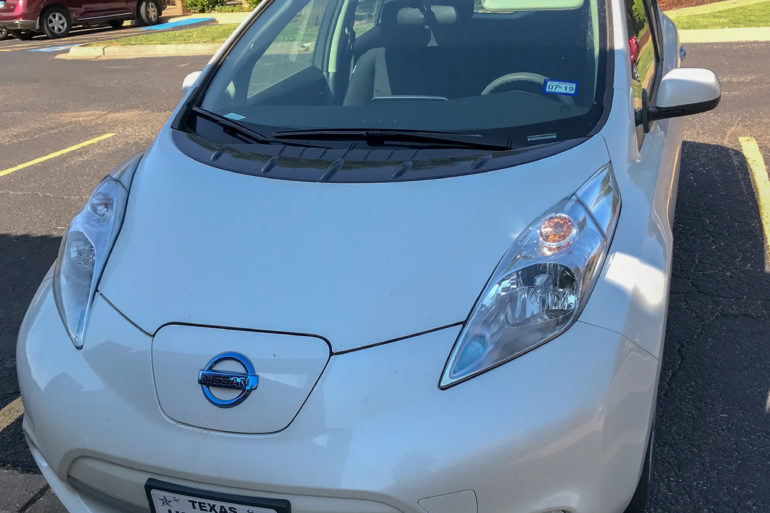
 Electric vehicles (EVs) are the future. “Why?” You may ask. They not only do they have environmental benefits, they also give more power to the consumer. Here at Group NIRE, we wanted to explore how electric vehicles play an integral part in helping create a more sustainable future—which is what we strive to do every day.
Electric vehicles (EVs) are the future. “Why?” You may ask. They not only do they have environmental benefits, they also give more power to the consumer. Here at Group NIRE, we wanted to explore how electric vehicles play an integral part in helping create a more sustainable future—which is what we strive to do every day.
Just how green are electric vehicles?
First things first, just how green are EVs? There are essentially two answers to this question. For Tesla vehicles, the carbon footprint might not be as small as many may think. “The greenhouse-gas-emissions footprint of electric vehicles can be pretty high on the front end, as they’re being built,” said economist Virginia McConnell, environmental research firm Resources for the Future (Wade, 2016). However, over time an electric vehicle emits significantly less carbon dioxide than a gas-powered vehicle. The electricity that powers these vehicles is generated through burning coal. Therefore, through the process of creating electric vehicles there are very high gas emissions. However just based off production, gas vehicles have much lower emissions than electric vehicles. As gas cars are driven over time their gas emissions rise above those of electric vehicles which emit significantly less throughout their life span. Mainly it depends on what part of the vehicle’s life span you are measuring for emissions.
The benefits of electric vehicles are seen from an environmental standpoint, however EVs could help the future of the electric grid as well. If every person in the United States switched to using EVs the electric grid would be in serious trouble. The demands would be harder to account for unless there were a consistent rhythmic pattern of peaks and valleys.
Benefits of charging during non-peak hours
“The key question isn’t how much demand electric vehicles add to the grid, it’s when does it add it.”
Daniel Brenden, senior power and renewables analyst, BMI Research in London (Bloomberg, 2018)
To dive deeper into this subject, we at Group NIRE have integrated an EV into our NODES project. We purchased a Nissan Leaf EV in the summer of 2017 to serve as a Distributed Energy Resource (DER), one of ten that helped us accomplish our first milestone in our Network Optimization Distributed Energy Systems (NODES) project. Our CEO, Mark Harral, keeps the LEAF at his home where he charges it at night during non-peak hours. Charging an electric vehicle during non-peak hours is crucial to the future of electricity because if the consumer is conscientious of when to charge their EV, and know how much demand their EV needs, they can take steps to charge in the most optimal times which are non-peak hours.
This helps level out demands to the electric grid and prevent excess generation. If consumers can alleviate power flux, power outages can also be prevented. It is even more efficient if consumers can connect their electric vehicles to use power from renewable energy sources such as wind turbines and solar panels. In Denmark, Nissan Motor Co. already sees the value in this as they are using EVs to mitigate wind power. Southern Californians are also encouraging EV owners to charge their EVs during mid-day when cheap solar energy surges the California grid (Bloomberg, 2016). This creates a full-circle approach to creating sustainable, controllable, and efficient power for the future. Ultimately, when consumers are knowledgeable about controlling their own power loads, they can play a part in helping the electric grid be more efficient.
Companies such as Minneapolis-based Xcel, created a pilot program for EV drivers to charge their vehicles at home with a “smart charger” without having to buy and install a second meter. Essentially in 2015 the Public Utilities Commission (PUC) gave their stamp of approval to provide a 40 % discount to drivers who agree to charge their EVs in their garages at night (Hughlett, 2018). Xcel rolled out this pilot program since customers were shying away from purchasing EVs at the discounted rate due to excess costs. “With Xcel’s discount rate, customers must get a second meter, which they pay for in monthly charges. In addition, there are no upfront costs needed to adapt a residence for a second meter,” said Xcel attorney, Ryan Long.
It is projected that in 2030 EVs will make up 20% of new automobile registrations (Hughlett, 2018). It’s looks as if EVs are here to stay.
Bibliography of Sources
Bloomberg. “Why Charging Your Electric Car at Night Could Save the World.” Fortune, Fortune, 26 Feb. 2018, fortune.com/2018/02/25/why-charging-your-electric-car-at-night-could-save-the-world/.
“Cleaner Cars from Cradle to Grave (2015).” Union of Concerned Scientists, 2015, www.ucsusa.org/clean-vehicles/electric-vehicles/life-cycle-ev-emissions#.Wto0TS-ZODe.
Hughlett, Mike. “Xcel Rolling out Pilot Program for Charging of Electric Vehicles at Home.” Star Tribune, Star Tribune, 13 Apr. 2018, www.startribune.com/xcel-rolling-out-pilot-program-for-charging-of-electric-vehicles-at-home/479584193/.
Wade, Lizzie. “Tesla's Electric Cars Aren't as Green as You Might Think.” Wired, Conde Nast, 10 Jan. 2018, www.wired.com/2016/03/teslas-electric-cars-might-not-green-think/.
